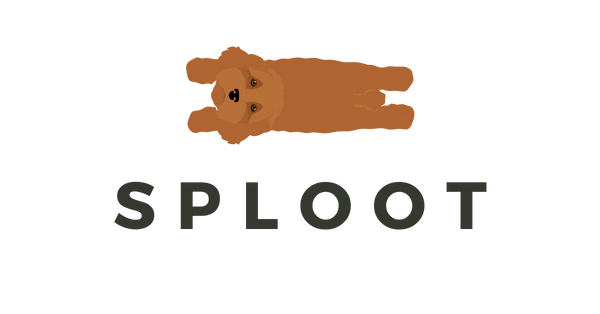As devoted pet owners, we strive to provide our furry companions with the best possible care and attention. Part of this responsibility includes being vigilant about their health and well-being, which means being able to recognize the signs of common pests and parasites that can affect our dogs. One such parasite that can infest dogs is lice.
What is Lice?
Dog lice, scientifically known as Trichodectes canis and Heterodoxus spiniger, are small, wingless insects that infest the fur and skin of dogs. There are two main species of lice that affect dogs: biting lice (Trichodectes canis) and sucking lice (Heterodoxus spiniger).
Biting lice feed on the skin cells, hair, and debris found on the surface of the dog's skin, while sucking lice feed on the dog's blood. Lice infestations in dogs are relatively uncommon compared to other parasites like fleas and ticks, but they can still occur and cause discomfort for our canine friends. In this article, we'll explore the signs of dog lice infestation, how to differentiate them from other skin conditions, and what steps you can take to address the problem promptly.
Can Dog Lice Transfer to Humans?
The short answer is no. Lice are species-specific. They do not move from one species to another. That means that you cannot get lice from your dog nor can your dog get human specific lice from you. Diagnosis is easily made by visually observing lice or their nits (eggs) in the hair.
What Does Canine Lice Look Like?
Appearance-wise, lice have flat bodies and are wingless. They are tannish, small bugs on the hair. The presence of nits may be noticeable with a magnifying glass. Run a fine tooth comb through the problem area to see if anything sticks.
Adult lice are large enough to be visible to the naked eye, roughly the size of a sesame seed — about 2-to-4 millimeters — and are yellow to tan or medium brown in color. They are distinguishable from fleas, which are very dark, almost black looking. In contrast with fleas,who are hard to catch, lice move very slowly.

Lice, especially the eggs or nits, are sometimes mistaken for dandruff, and one way to distinguish lice from dandruff is by shaking hair removed from the dog. If the small flakes fall off, it’s dandruff. If they cling stubbornly to the hair, it’s probably lice.
Identifying Dog Lice
- Excessive Scratching and Itching: One of the most common signs of dog lice is excessive scratching and itching. Infested dogs may scratch, bite, or lick their skin repeatedly in an attempt to alleviate the discomfort caused by lice bites.
- Visible Lice or Nits: In severe cases of infestation, you may be able to spot adult lice or their eggs, known as nits, on your dog's fur. Adult lice are small, wingless insects that are tan to grayish-white in color and can sometimes be seen crawling around the dog's fur, particularly around the neck, ears, and tail area. Nits, on the other hand, are tiny, oval-shaped eggs that are attached to individual hair shafts near the base of the hair.
- Irritated or Inflamed Skin: Infestation with lice can cause irritation and inflammation of the skin, leading to redness, rash-like patches, and possibly secondary infections. You may notice areas of hair loss or scabs on your dog's skin, particularly in areas where lice are most concentrated.
- Restlessness and Discomfort: Dogs infested with lice may exhibit signs of restlessness, discomfort, or agitation. They may seem more irritable or unsettled than usual and may have difficulty relaxing or sleeping comfortably.
Differentiating Dog Lice from Other Skin Conditions
It's important to note that the signs of dog lice infestation can sometimes resemble those of other skin conditions, such as flea allergies, dermatitis, or fungal infections. To accurately diagnose lice infestation, it's essential to consult with your veterinarian, who can perform a thorough physical examination and recommend appropriate diagnostic tests, such as skin scrapings or microscopic examination of hair samples.
Treatment and Prevention
If your dog is diagnosed with lice infestation, your veterinarian will recommend an appropriate treatment plan based on the severity of the infestation and your dog's overall health. Treatment typically involves using medicated shampoos, sprays, or spot-on treatments that are specifically formulated to kill lice and their eggs. In addition to treating your dog, it's also important to thoroughly clean and disinfect your home, including your dog's bedding, toys, and grooming tools, to prevent reinfestation.
Preventing lice infestations in dogs involves practicing good hygiene and regular grooming habits, as well as avoiding contact with infested animals whenever possible. Keeping your dog's coat clean and well-maintained can help reduce the risk of lice infestation, as can regularly inspecting your dog for signs of parasites and seeking prompt veterinary care if any issues arise.
What To Do Next?
If you want to eradicate dog lice, you should vacuum, launder any pet bedding in high heat, sanitize grooming tools, and maintain high levels of pet hygiene. Due to their life cycle, owners should expect to uphold super-clean standards and medication for about a month. Even if the adult lice are killed by initial treatments, the nits could still release more nymphs.
Separate the affected pet from other household animals until the problem is resolved or treat all pets at the same time whether they are living with lice or not.
While lice infestations in dogs are relatively uncommon, they can still occur and cause discomfort for our canine companions. By being aware of the signs of dog lice infestation and knowing how to differentiate them from other skin conditions, pet owners can take proactive measures to protect their dogs' health and well-being. If you suspect that your dog may be infested with lice, it's important to consult with your veterinarian for proper diagnosis and treatment. With prompt and appropriate care, you can help your dog overcome lice infestation and enjoy a happy, healthy life free from parasites.

